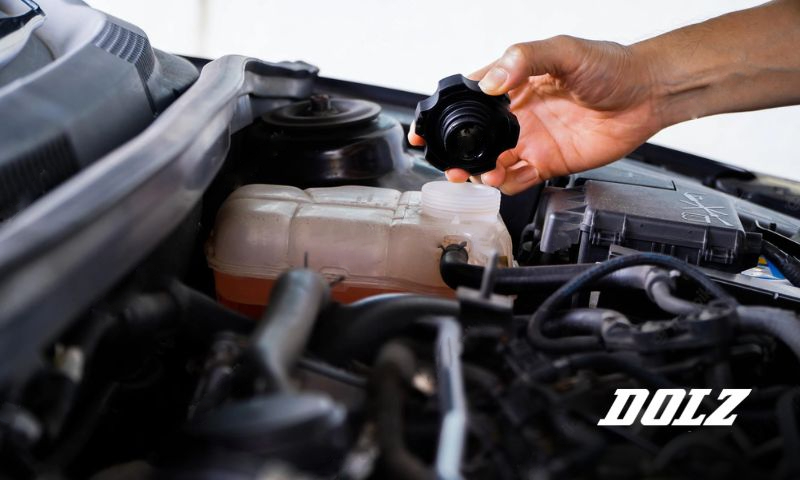This coolant guide responds to an immediate need for vehicle owners: to know what the right type of coolant is for their car.
In fact, picking the right antifreeze or coolant can make a significant difference in your vehicle’s performance. This liquid is in charge of keeping radiators from freezing in extreme cold and overheating in heat.
All in all, coolant is a vital part of keeping an engine in shape and extending its life.
However, there are many different types of coolant liquids available. The following antifreeze guide is meant to provide a brief overview of the importance of this component and the right choices when it comes to picking it. Keep reading to find out.
Coolant guide: 1. Function of the coolant in a vehicle cooling circuit
The coolant runs continuously through the engine and is in charge of absorbing heat and carrying it to the radiator. But it performs some other key functions:
- Prevents overheating and freezing. As part of the coolant mixture, antifreeze is in charge of lowering the freezing point of water.
- Is in charge of lubricating the water pump seal. When picking a coolant it’s important to know that this liquid should generate an adequate shared ecosystem with water pumps. In fact, a wrong decision when it comes to vehicle coolants is often the reason behind water pump malfunctions.
- Antifreeze is in charge of inhibiting corrosion. While water can act as a coolant, it can also cause corrosion issues in the metallic elements of the engine. The addition of the right ratio of antifreeze will prevent this issue from happening, as it typically contains anti-corrosive elements.
Car coolant guide: 2.Types of coolants available in the market
At this point in our coolant guide it’s important to determine the typical composition of this liquid. Coolant is often made of water, glycol or antifreeze (often either ethylene or propylene glycol) in charge of reducing water’s freezing temperature and other additives acting as chemical inhibitors.
Additionally, those looking for an answer to ‘ which coolant for my car’ type of questions should also be aware of the following three types of coolant:
Inorganic coolant
An IAT formula or Inorganic Additive Technology prioritizes corrosion protection. It was the most conventional option up until the early nineties and is still used in older vehicle models. It is based on ethylene, presents a bright green color and includes additives such as phosphates and silicates. This option should typically be replaced every 2 years or around 40,000 kilometers (25,000 miles).
Organic coolants
Organic coolants started being employed in a more consistent way around the late-nineties. These don’t include phosphates and silicates, present similar anti-corrosion properties than inorganic options (and improved anti corrosion for aluminum and nylon parts) but offer a longer life span: organic coolants are typically replaced every 3 to 5 years. This option is based on propylene glycol and is thus less toxic and harmful for the environment. Its color ranges from orange to yellow and red.
Other coolants
Other coolant options can be described as a mix between organic and inorganic options to achieve maximum corrosion resistance. These can come in a variety of colors (from orange to yellow but also blue, pink or purple). Their lifespan might go up to 5 years and they are typically advised for cars manufactured after 2002.
Related content: The importance of using the right coolant liquid
Coolant guide: 3. Effects of not using a suitable coolant
Any relevant car coolant guide must also warn you about the consequences of not using suitable coolant options. As we’ve mentioned above, the truth is that the coolant plays a key role in engine performance, guaranteeing an extended life cycle as well as avoiding issues related to extreme temperatures.
On the other hand, low-quality coolants might result in issues including added corrosion and engine malfunctions and breakdowns. Its interconnection with the water pump also means the wrong coolant choice could generated issues related to the pump.
In other words, the importance of picking the right coolant should not be underestimated.
Keep reading: Car temperature: Why do some cars take so long to warm up?
Do I need to add coolant regularly?
The final step in our coolant guide is to provide you with useful timeframes as to when to check and add coolant to your vehicle.
The answer is simple: first, ensure you get the right coolant for your vehicle by asking professional mechanics. Then, read the bottle’s description to ensure recommended times for changing it. Finally, it’s recommended that you check coolant levels regularly (some go as far as advising a check every month), so that you’re able to monitor for potential leaks and other issues.


